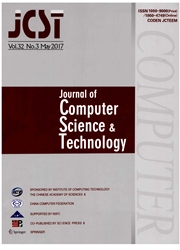

 中文摘要:
中文摘要:
它是众所周知的没有景色上的任何演绎知识,照相机运动;照相机内在的参数,在一双图象之间的唯一的限制是所谓的 epipolar 限制,或相等地它的基本矩阵。为每个基本矩阵,至多照相机的内在的参数上的二独立限制经由 Kruppa 方程是可得到的。给定的 N 图象, N (N1 )/2 基础矩阵出现,;N (N1 ) Kruppa 限制是可得到的。到我们的知识,然而,独立人士, Kruppa 限制从这些 N (N1 ) 存在的一个形式证明在文学是无法获得的。在这篇论文,我们证明图象与改变参数由一个针孔照相机捕获了的那给定的 N;在一般运动下面,独立 Kruppa 限制的数字是(5N9 )(N < 2 ) ,;它是不到独立限制从的绝对在仅仅二次曲面。Kruppa 方程的这个 one-constraint-less 性质是他们的固有的缺乏;独立于照相机运动。这缺乏由于他们 rank-three-ness 在上的自动实施的失败绝对二次曲面。
 英文摘要:
英文摘要:
It is well known that without any priori knowledge on the scene, camera motion and camera intrinsic parameters, the only constraint between a pair of images is the so-called epipolar constraint, or equivalently its fundamental matrix. For each fundamental matrix, at most two independent constraints on the cameras' intrinsic parameters are available via the Kruppa equations. Given N images, N(N- 1)/2 fundamental matrices appear, and N(N- 1) Kruppa constraints are available. However, to our knowledge, a formal proof of how many independent Kruppa constraints exist out of these N(N - 1) ones is unavailable in the literature. In this paper, we prove that given N images captured by a pinhole camera with varying parameters and under general motion, the number of independent Kruppa constraints is (5N - 9) (N 〉 2), and it is less than that of independent constraints from the absolute quadric by only one. This one-constraint-less property of the Kruppa equations is their inherent deficiency and is independent of camera motion. This deficiency is due to their failure of automatic enforcement of the rank-three-ness on the absolute quadric.
 同期刊论文项目
同期刊论文项目
 同项目期刊论文
同项目期刊论文
 期刊信息
期刊信息
